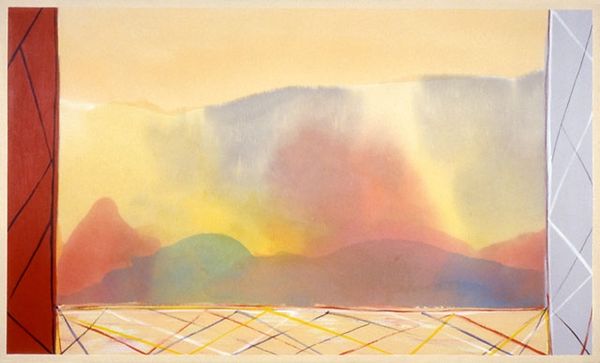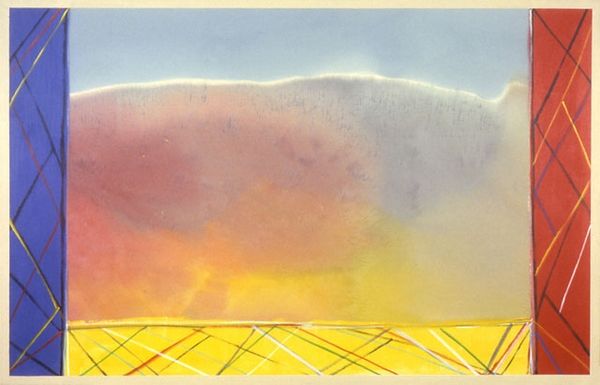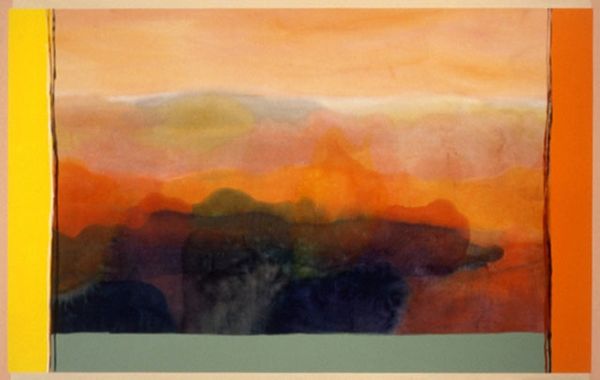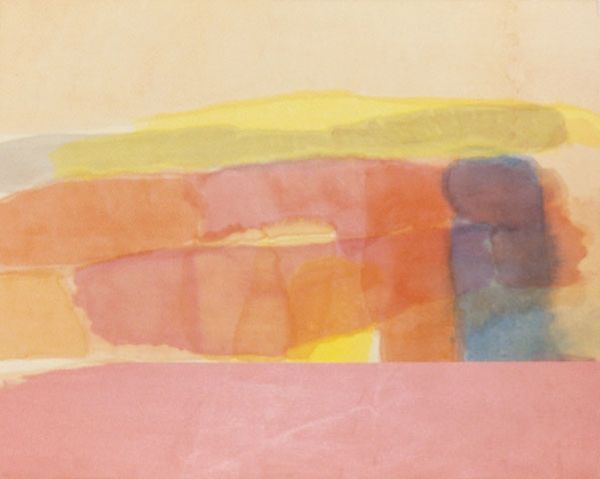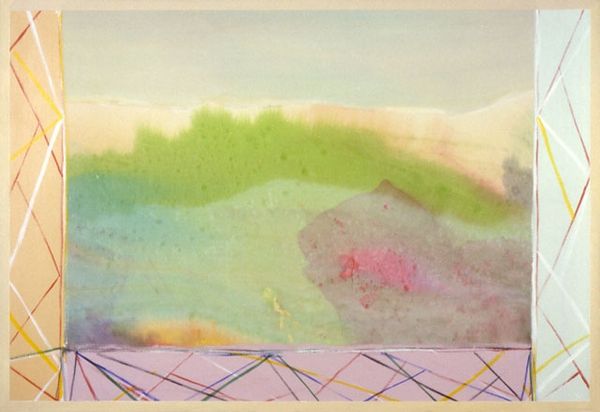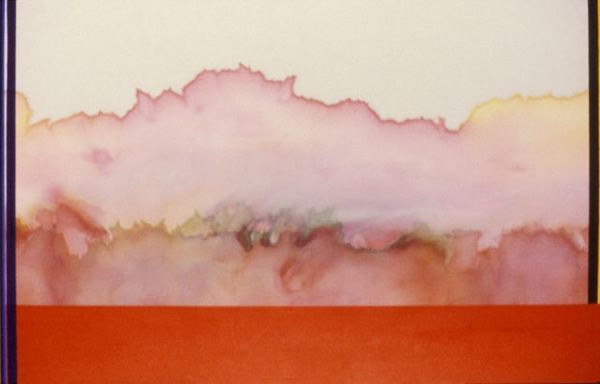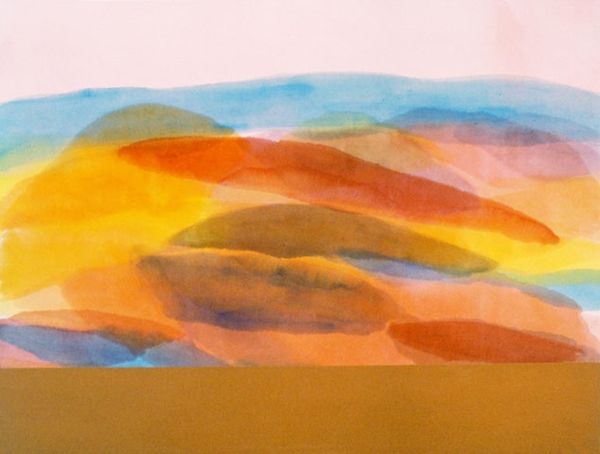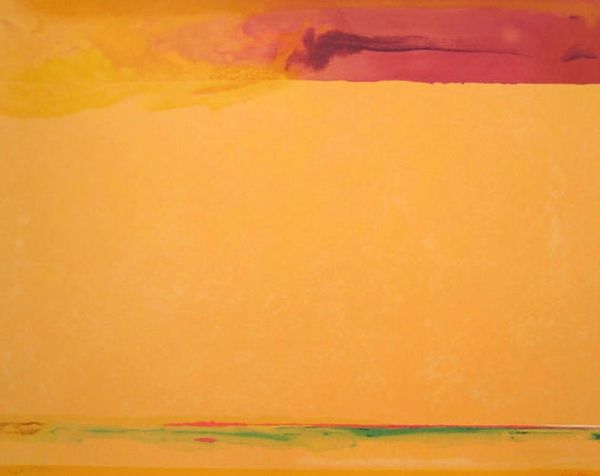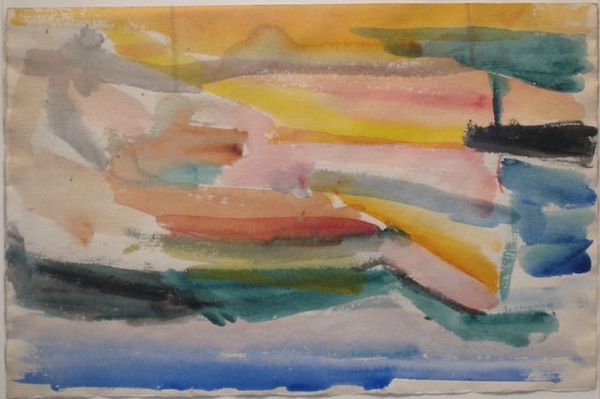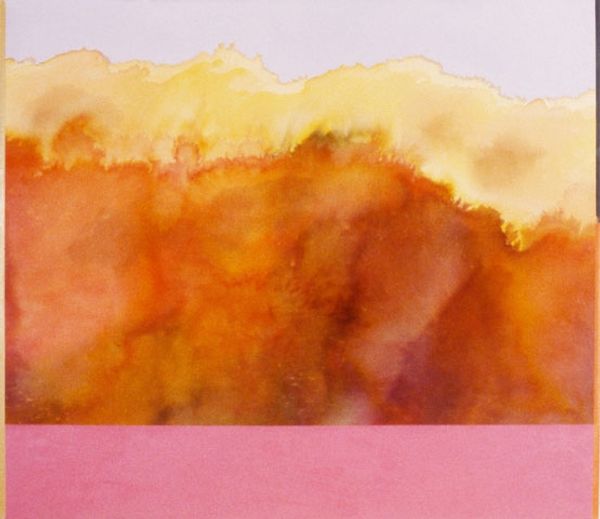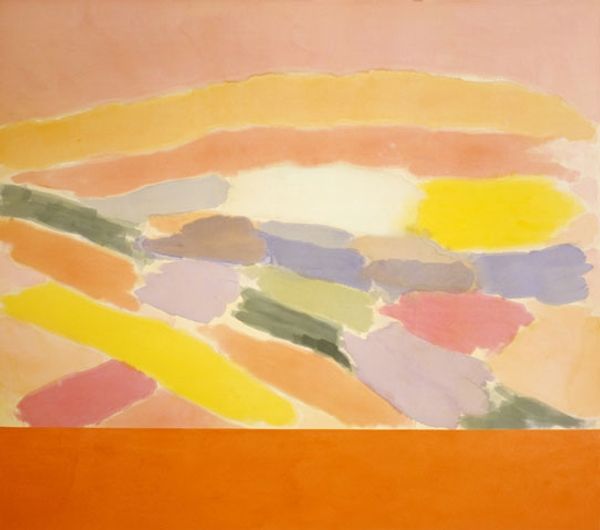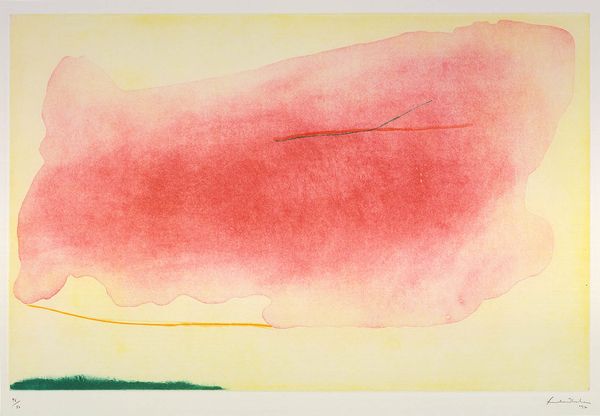
Copyright: Ronnie Landfield,Fair Use
Editor: Wow, what a sunset… or sunrise? It's got that mellow, hazy feeling. Makes me want to sip something fruity with a little umbrella in it. Curator: That's an interesting observation. What we're looking at is "Tahity Trinity," a watercolor by Ronnie Landfield, completed in 1988. Considering the title, perhaps that fruity drink wouldn't be too far off. Editor: Tahity Trinity… I was sensing those island vibes! There's something about the composition, with those bold rectangles framing that central field of color, that almost feels like looking through a window onto a dreamscape. Or maybe it's like looking at a faded photograph? Curator: I agree, those hard-edged lines surrounding the fluid center creates an intriguing tension, disrupting any simplistic reading of landscape. Thinking of the late 1980s, and considering Landfield’s broader body of work rooted in abstract expressionism, one can explore how "Tahity Trinity" continues dialogues around modernist landscape, formal abstraction, and perhaps the very act of seeing and framing. How do these geometric interruptions reflect or refract our access to the natural world? Editor: I'm just struck by the watercolor washes… the way the colors bleed and blend. It's a testament to the power of the medium. Like holding my breath, the colors seem weightless. I wonder what inspired him at this point in his career? Curator: It's important to examine how this work engages with prevailing discourses of its time. For instance, abstract expressionism had been heavily critiqued, particularly its relationship to Cold War politics and notions of masculine heroism. How does Landfield, working in the late 80s, engage, resist, or subvert those earlier tropes through his choices in color, composition, and material? Editor: You're right, there's more going on than just a pretty picture. It makes you wonder, what kind of "Tahiti" are we actually seeing? And whose trinity is being represented here? Hmmm… food for thought indeed. Curator: Precisely. This is where engaging with social and art histories encourages critical thinking about what seems initially intuitive, offering deeper understandings of seemingly straightforward images.
Comments
No comments
Be the first to comment and join the conversation on the ultimate creative platform.
